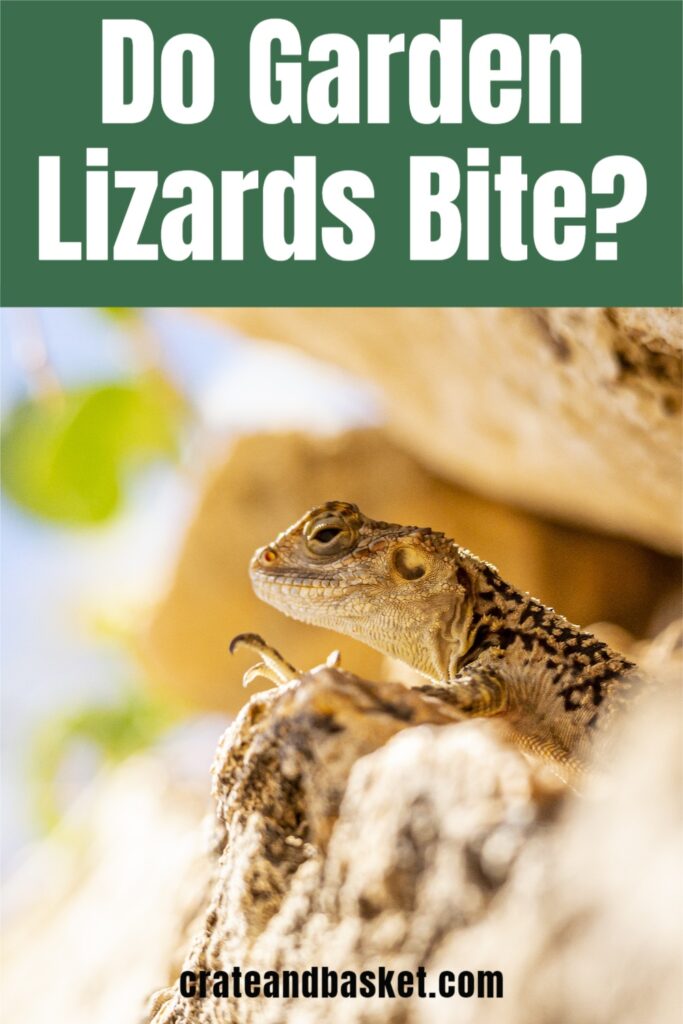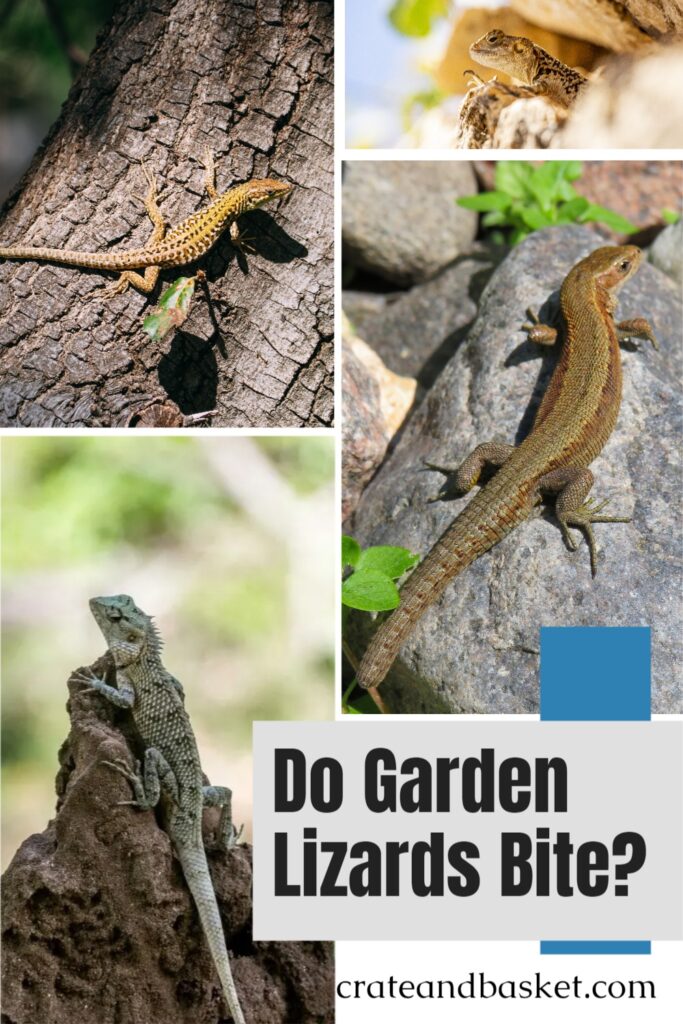How To Get Rid Of Lizards In Garden


Small garden lizards are literally everywhere you look across your backyard during warmer times, so it's normal to be curious about them.
Are they poisonous? What happens if they bite you? Do they even have teeth?
Now is a good time to find that out, along with some more interesting facts about garden lizards!

So Really, Do They Bite?
As with all other animals, garden lizards have some mechanisms to defend themselves, and yes, biting is definitely one of them.
If necessary, they will go for whatever predator is standing in front of them, even if it's just you trying to catch it.
Yet, they are rather small and fearful when they see a human, which is why they will probably just crawl away and hide in a dark corner until the potential danger is gone.
Garden lizards are mostly harmless but they will show their teeth if urged to do it.
You can actually see certain signs before it happens. They give a warning, open their mouth, and simply start hissing to make it clear how they feel about your presence.
If the bite happens anyway, you may experience some small pain.
Just don't forget to clean the wound no matter how big is and apply antiseptic cream in order to avoid potential infection.
Do Garden Lizards Have Teeth?
Since there is still a small possibility they would bite you, the answer to this question is—yes, they do have teeth.
Of course, considering their role in the ecosystem and their size, they can't actually hurt bigger predators coming after them, but they can catch and nicely slice some smaller prey.
Most garden lizards are carnivores so they eat small insects, moths, ants, slaters, caterpillars, spiders, worms, flies, and other tiny animals they can snare.

Are Garden Lizards Poisonous?
Short and clear—no.
When it comes to North America, there is only one type of lizard that's poisonous, which is the Gila monster.
This very large lizard can be found in some parts of Mexico and the southern part of the US.
Besides this one, you have nothing to worry about since common garden lizards are fairly harmless.
However, there is one thing you should be aware of—garden lizards can carry and transmit diseases. They may carry salmonella or other unwanted bacteria.
These pathogens may cause some health problems such as stomach cramps, diarrhea, vomiting, and fever. The bacteria can be transmitted via the lizards' urine and feces.
How Big Do Garden Lizards Get?
Among the over 5,500 types, you can certainly find lizards of all sizes.
When it comes to the garden kind, they generally grow up to 4 inches, which is around 10-30 cm long.
Female lizards are a bit smaller than males, especially during the mating season.
Females will actually change color to a lighter shade, while males grow bigger, which is why you may see a garden lizard over 10 inches long.

What to Do if a Garden Lizard Gets in the House?
Lizards in your house are definitely not a perfect scenario, but sometimes it's hard to avoid.
Still, don't worry. There are efficient ways that can help you get rid of them if that happens.
You can make tobacco and coffee mixture balls and place them in the corners of every room where you notice their presence. Pretty soon, you'll notice how lizards clear out of your home.
Clean the cabinets under your sink since those are definitely some of their favorite places to hide.
Make sure to keep the interior dry. That will both keep lizards away and preserve your cabinets.
Eggshells are another pretty helpful "weapon" you can use against your small unwanted guests.
They actually have a specific smell that sparks fear in the lizards and makes them think there is a larger predator around.
As you can see, there's no need to go for any specific, unusual, or expensive things to make them go away. Sometimes it's enough to simply stop by the kitchen.
Yup, both onion and garlic have smells lizards can't tolerate.
You can use garlic or onion juice mixed with water and then simply spray it all over the house. Or, slice them up and set them in the corners of every room.
In the end, keeping your cat inside your house can definitely help with stray lizards. Though cats may not eat them, they still enjoy chasing and hunting them.

Most Common Types of Garden Lizards in the United States
The Mediterranean gecko is one of those rather common and well-known lizard types that are active during the night.
These lizards are pretty useful since they are always after smaller bugs, mosquitos, and other insects you may be bothered by.
You can easily recognize them by their big eyes and light color; sometimes they even make squeaky sounds that can remind you of mice.
The five-lined skink got its name because of the yellow lines you can see on its back while they are young. Another one of their recognizable features, when they are young, is an electric blue tail.
Five-lined skinks prefer damp areas.

There's also the eastern glass lizard. This lizard is unique because it's legless, which is why some people believe it's a snake.
Actually, if you dare to take a closer look, you'll see it has ear holes and eyelids, both of which snakes don't have.
What about the green anole? It's the only native lizard in the Southeast part of the US that changes its color.
Because of this feature, people commonly think they are chameleons – even though they're not.
They can change their regular bright green color to gray or brown, according to stress, mating period, temperature, or some specific behavioral patterns.
The brown anole is a species that spends most of its life either on tree trunks or the ground.
They are originally native to Cuba, but you'll see more of them in Florida than the green anole.
Male broadhead skinks have a bigger, wider head with an orange or bright red coloration. This species can sometimes grow over 12 inches long.

Some Final Words
Garden lizards are generally smaller species that can be quite useful when it comes to catching flies, bugs, or other insects in your backyard.
They are usually afraid of humans and pets but will defend themselves if threatened.
We truly hope this was helpful, and if you have more lizard-related questions, we're always here!
Sources:
- https://www.pointepestcontrol.net/are-lizards-dangerous/.
- https://gardenbagan.com/weird-things-garden-lizard-can-eat-everything-to-know/
- https://www.rentokil.com.sg/blog/attracts-lizards-home/
- https://www.britannica.com/animal/lizard
- https://parenting.firstcry.com/articles/how-to-get-rid-of-lizards-from-home-with-simple-and-effective-ways/
- https://www.99.co/blog/singapore/7-effective-ways-to-get-rid-of-lizards/
- https://www.jacksonvillezoo.org/blog/posts/local-lizards
How To Get Rid Of Lizards In Garden
Source: https://crateandbasket.com/do-garden-lizards-bite/
Posted by: fossutall1944.blogspot.com

0 Response to "How To Get Rid Of Lizards In Garden"
Post a Comment